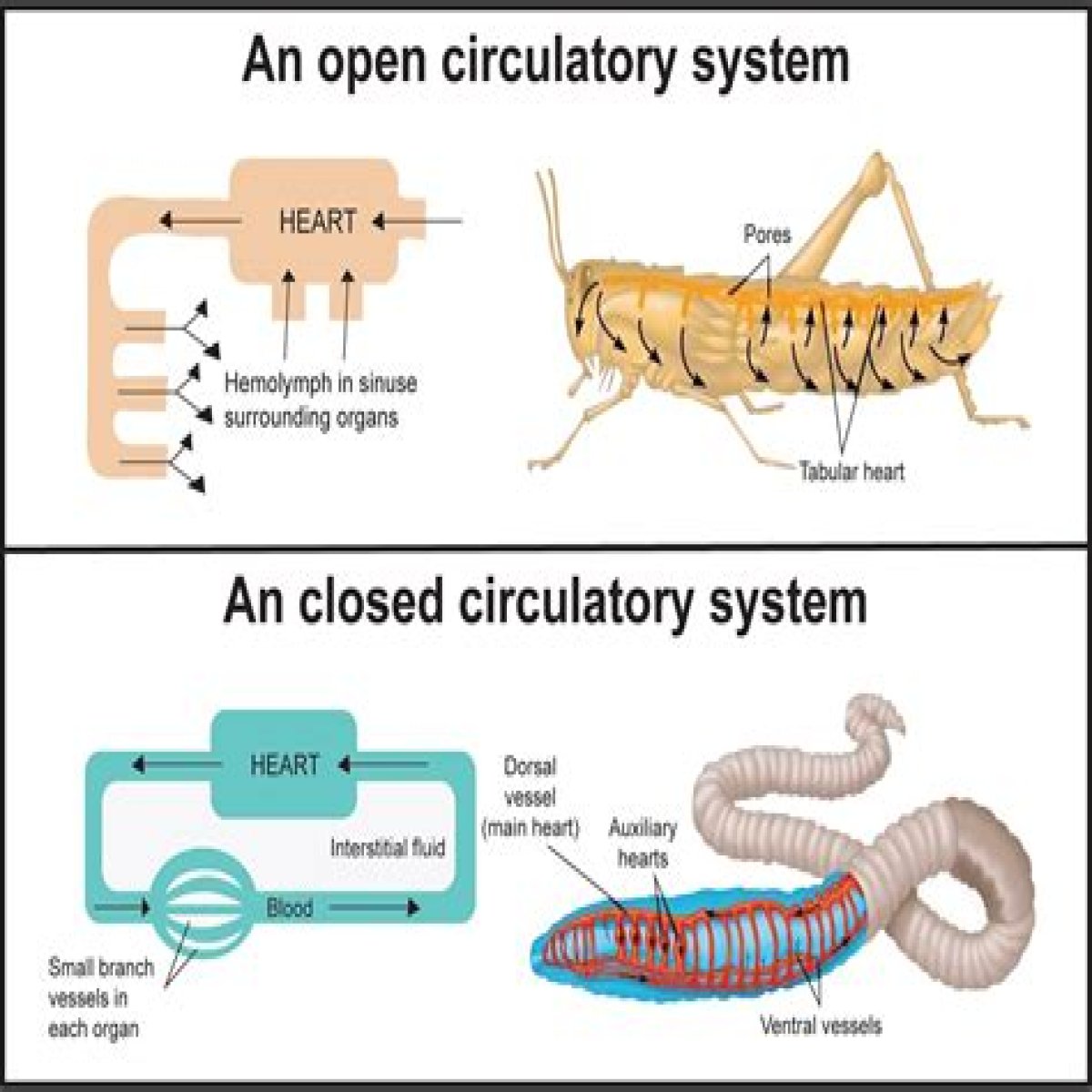The open circulatory system is a fascinating biological system that plays a critical role in the functioning of numerous organisms, particularly invertebrates. Unlike the closed circulatory systems found in mammals, birds, and some other animals, the open circulatory system is characterized by the absence of blood vessels, allowing the fluid known as hemolymph to flow freely within the body cavity. This unique arrangement raises intriguing questions about the efficiency and adaptability of various species that rely on this circulatory system.
One of the most compelling aspects of the open circulatory system is its simplicity and effectiveness in smaller organisms. The hemolymph, which serves functions similar to blood, bathes the internal organs directly, facilitating the transport of nutrients, waste products, and gases. This process highlights the evolutionary adaptations that have allowed these creatures to thrive in diverse environments. Understanding the open circulatory system provides insight into the biology of these organisms and their ecological roles.
In this article, we will explore various examples of open circulatory systems, investigate how they function, and discuss the advantages and disadvantages of this system. By examining specific organisms that utilize this type of circulatory mechanism, we can appreciate the evolutionary significance of the open circulatory system and its implications for the study of biology and ecology.
- What Are the Key Characteristics of an Open Circulatory System?
- What Are Some Examples of Open Circulatory Systems?
- How Does the Open Circulatory System Function?
- What Are the Advantages of an Open Circulatory System?
- Which Organisms Are Best Known for Their Open Circulatory Systems?
- How Do Open Circulatory Systems Compare to Closed Circulatory Systems?
- Conclusion: What Can We Learn From the Open Circulatory System?
What Are the Key Characteristics of an Open Circulatory System?
The open circulatory system is defined by several key characteristics that set it apart from closed circulatory systems. These include:
- No distinct blood vessels: The hemolymph flows through open spaces in the body cavity.
- Hemolymph functions: Similar to blood, it carries nutrients, waste, and gases.
- Lower pressure: The system operates at lower pressures compared to closed systems.
- Direct contact: Organs are directly bathed in hemolymph, facilitating nutrient and gas exchange.
What Are Some Examples of Open Circulatory Systems?
Numerous organisms exhibit the open circulatory system, showcasing its versatility across different species. Some prominent examples include:
- Insects: Insects like grasshoppers and butterflies utilize an open circulatory system, allowing them to efficiently transport nutrients and waste.
- Crustaceans: Many crustaceans, such as crabs and lobsters, have open circulatory systems that help them thrive in aquatic environments.
- Mollusks: Species like snails, clams, and octopuses also employ this system, with variations adapted to their unique lifestyles.
How Does the Open Circulatory System Function?
The functioning of the open circulatory system is relatively straightforward. Hemolymph is pumped by the heart into the hemocoel, the body cavity, where it bathes the internal organs. Key processes include:
- Circulation: The heart contracts, propelling hemolymph into the body cavity.
- Exchange: Nutrients and gases diffuse between hemolymph and body tissues.
- Return: Hemolymph returns to the heart through openings called ostia, where the cycle begins anew.
What Are the Advantages of an Open Circulatory System?
Despite its simplicity, the open circulatory system offers several advantages, particularly for smaller organisms:
- Less energy required: The lower pressure system reduces the energy needed for circulation.
- Flexibility: The direct contact with tissues allows for rapid nutrient exchange.
- Space-saving: The absence of extensive blood vessels allows for a more compact body design.
Are There Disadvantages to the Open Circulatory System?
While there are benefits to the open circulatory system, there are also notable disadvantages:
- Less efficient transport: The lower pressure can lead to slower nutrient and gas transport.
- Vulnerability: The open system can expose organisms to pathogens and toxins in the environment.
Which Organisms Are Best Known for Their Open Circulatory Systems?
Several well-known organisms are prime examples of open circulatory systems. Some of these include:
- Insects: Grasshoppers and bees are classic examples.
- Crustaceans: Lobsters and shrimp illustrate the system in aquatic environments.
- Mollusks: Octopuses and squids display advanced adaptations of the open circulatory system.
How Do Open Circulatory Systems Compare to Closed Circulatory Systems?
When comparing open and closed circulatory systems, several distinctions become evident:
- Blood vessels: Closed systems have a network of blood vessels; open systems do not.
- Pressure: Closed systems operate at higher pressure, allowing for more efficient transport.
- Complexity: Closed systems support larger body sizes and more complex organisms.
Conclusion: What Can We Learn From the Open Circulatory System?
In conclusion, the open circulatory system provides an intriguing insight into the evolutionary adaptations of various organisms. By examining examples of open circulatory systems, we gain a better understanding of how these systems function and the ecological roles they play. The simplicity and effectiveness of the open circulatory system exemplify the diversity of life on Earth, showcasing how different species adapt to their environments. Understanding these systems not only enriches our knowledge of biology but also highlights the intricate web of life that connects all organisms.
Understanding The Open Circulatory System: An In-Depth ExplorationUnraveling The Connection Between Armie Hammer And Paige LorenzeUnleashing The Excitement Of Wrestling With WatchWrestling.in
Image result for closed and open circulatory system Circulatory
PPT Open Vs Closed Circulatory System PowerPoint Presentation, free
Closed Circulatory System Definition & Advantage Lesson
